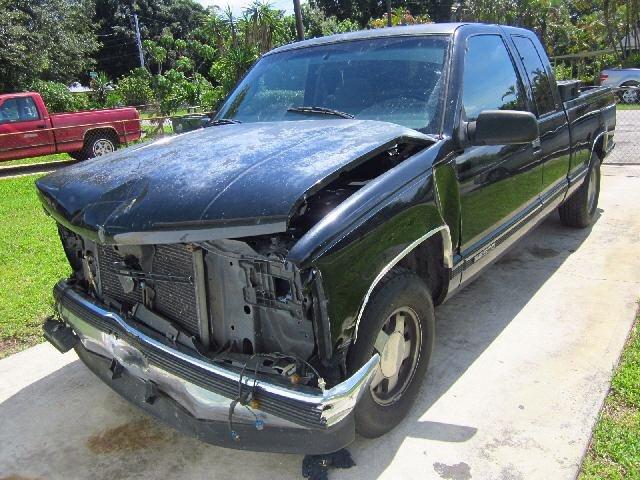 Florida employees injured at work may be able to bring a valid claim for damages against a third party. For purposes of this blog, a third party means an entity, including an individual, other than the employer or other entity entitled to workers’ compensation immunity. A third party case may exist if the work related injury was caused by the negligence or intentional act of the non-exempt entity. A simple example is where a deliveryman is injured in a motor vehicle accident by a negligent non-exempt third party. Because the accident happened in the course and scope of the employment, the worker would is eligible to recover both workers’ compensation benefits and personal injury damages.
Florida employees injured at work may be able to bring a valid claim for damages against a third party. For purposes of this blog, a third party means an entity, including an individual, other than the employer or other entity entitled to workers’ compensation immunity. A third party case may exist if the work related injury was caused by the negligence or intentional act of the non-exempt entity. A simple example is where a deliveryman is injured in a motor vehicle accident by a negligent non-exempt third party. Because the accident happened in the course and scope of the employment, the worker would is eligible to recover both workers’ compensation benefits and personal injury damages.
Where workers’ compensation benefits have been furnished, Section 440.39 Florida Statutes creates a lien against the compensation the injured worker receives from a third party. In other words, the employer or its insurance carrier have the statutory right to be repaid from the money paid to the injured worker by the third party. “The lien statute has a straightforward and appropriate objective–the prevention of double recoveries by injured employees who have recovered statutory benefits under the workers’ compensation law but also have claims against responsible parties other than the employer. Jones v. Martin Elecs., Inc., 932 So.2d 1100, 1108 (Fla.2006). The statute allows the employer or insurer to be subrogated to the proceeds of such third-party tort recoveries to the extent of the amounts paid or to be paid by the employer or insurer.” Luscomb v. Liberty Mut. Ins. Co., 967 So.2d 379 (Fla. 3rd DCA 2007). Importantly, the workers’ compensation lien is capped at the claimant’s net recovery. City of Hollywood v. Lombardi, 770 So.2d 1196, 1202 (Fla.2000), and Aetna Insurance Co. v. Norman, 468 So.2d 226, 228 (Fla.1985).
The lien can be waived by the employer or carrier. However, this will typically come at the cost of the workers’ compensation case settling for less than if the lien remained in place.
When the lien isn’t waived, how is the claimant’s net recovery determined?
The formula, as set forth in the statute, can be difficult to comprehend. Extensive litigation has ensued over its meaning and application, with many appellate decisions attempting to explain the issues. In my opinion, the best play to start to understand the formula is the Florida Supreme Court case Manfredo v. Employer’s Casualty Insurance Company, 560 So.2d 1162 (Fla 1990).
This is the so-called “Manfredo Formula”: Third party settlement/recovery amount less (-) attorney fees and costs divided by (/) full case value = the % value of the wc lien.
Here’s the formula by way of a hypothetical example:
- WC lien (medical, indemnity, settlement, etc.): $ 100,000
- $ 250,000 third party settlement less fees (40%) and costs ($ 35,000) = $ 135,000
- Full case value: $ 1,000,000. (The case was for less due to tough liability, coverage limits, etc.)
- $ 135,000 divided by $ 1,000,000 = 13.5%
- 13.5% of $ 100,000 = $ 13,500.
Hence, the workers’ compensation employer/carrier recovers $ 13,500, 13.5%, of its $100,000 lien from the $250,000 personal injury recovery.
Resolving the WC lien is not always this simple. In the Aetna case, the Florida Supreme Court noted some complicating factors. In speaking of 440.39, the court wrote:
This very logical process, and the statute describing it, becomes more complicated because of the broad array of circumstances that may occur with the third-party claims and recoveries. They may be brought by the employee, employer, or insurer (based on the one-year windows described above), and the attorneys prosecuting the claims may therefore be compensated by the employee, employer, or insurer. The employee may have settled all the workers’ compensation medical and indemnity claims for a lump sum (as here), or the benefits may continue to be payable into the future. The third-party recoveries may exceed the total benefits paid and to be paid by the employer or its insurer, or they may be less than that total (as here). There may be multiple third-party claims and recoveries, and therefore multiple computations of the lien, and the recoveries may occur at different times. A particular recovery may be less than the “full value” of the third-party claim for a variety of reasons: other third-party tortfeasors may be responsible for some of the damages, the employee may have been comparatively negligent, or the plaintiff and counsel for the plaintiff may discount the value of the claim in order to avoid the risk and delay inherent in any lawsuit.
Continue reading
 A landowner owes invitees two independent duties: “(1) to maintain the premises in a reasonably safe condition, and (2) to give warning of concealed perils.” Cruz-Haymer v. Festival Food Market, Inc. So.3d , 38 FLW D1581 (Fla. 4th DCA 7-24-2010 and Burton v. MDC PGA Plaza Corp., 78 So. 3d 732, 734 (Fla. 4th DCA 2012).
A landowner owes invitees two independent duties: “(1) to maintain the premises in a reasonably safe condition, and (2) to give warning of concealed perils.” Cruz-Haymer v. Festival Food Market, Inc. So.3d , 38 FLW D1581 (Fla. 4th DCA 7-24-2010 and Burton v. MDC PGA Plaza Corp., 78 So. 3d 732, 734 (Fla. 4th DCA 2012).  Florida Injury Attorney Blawg
Florida Injury Attorney Blawg








